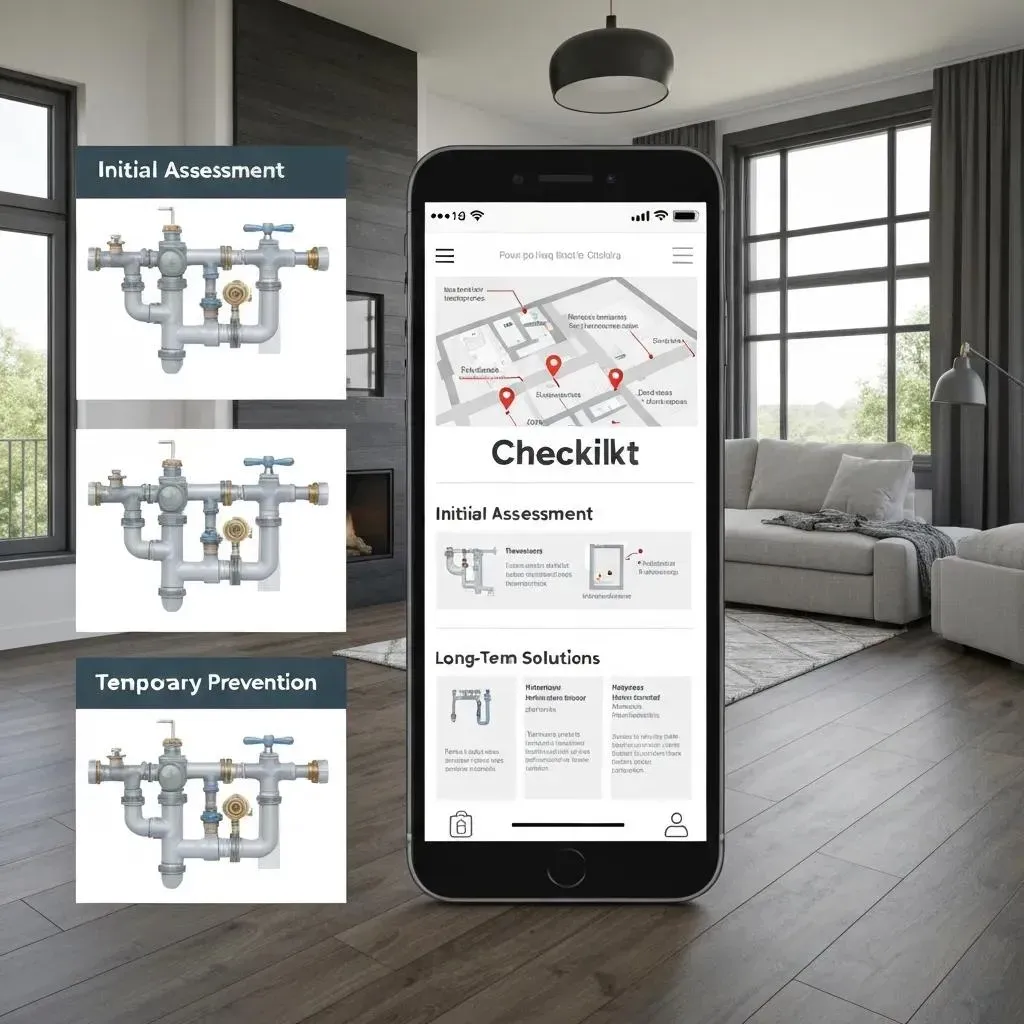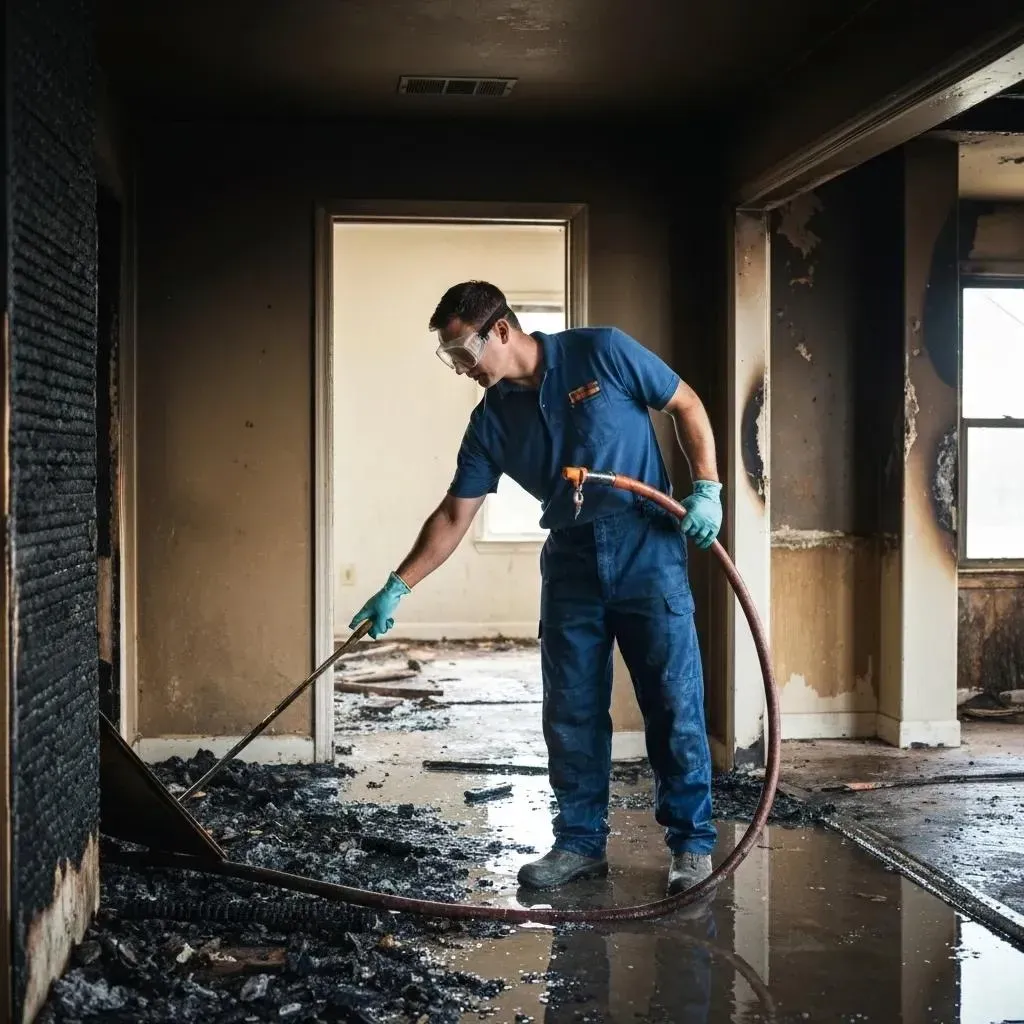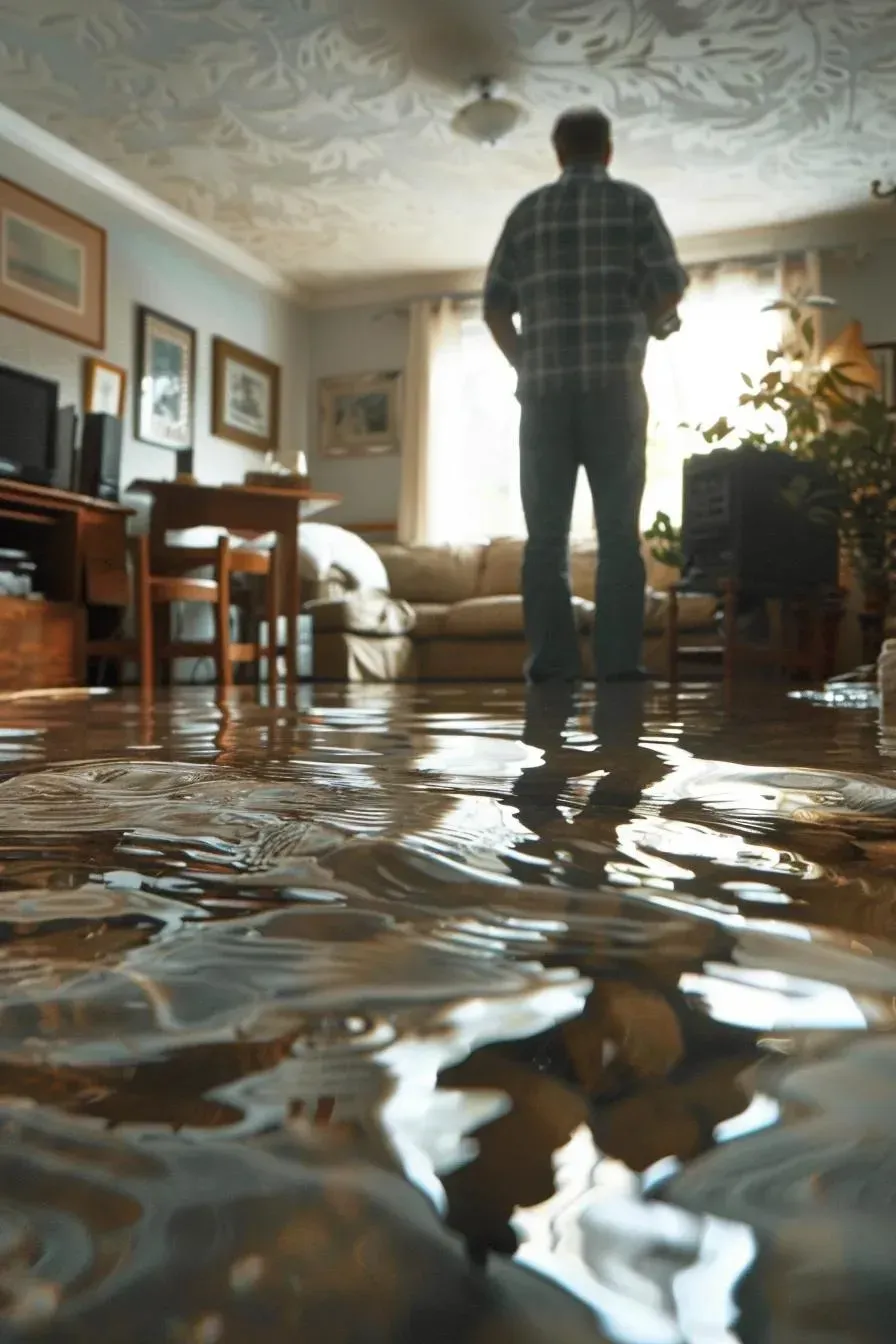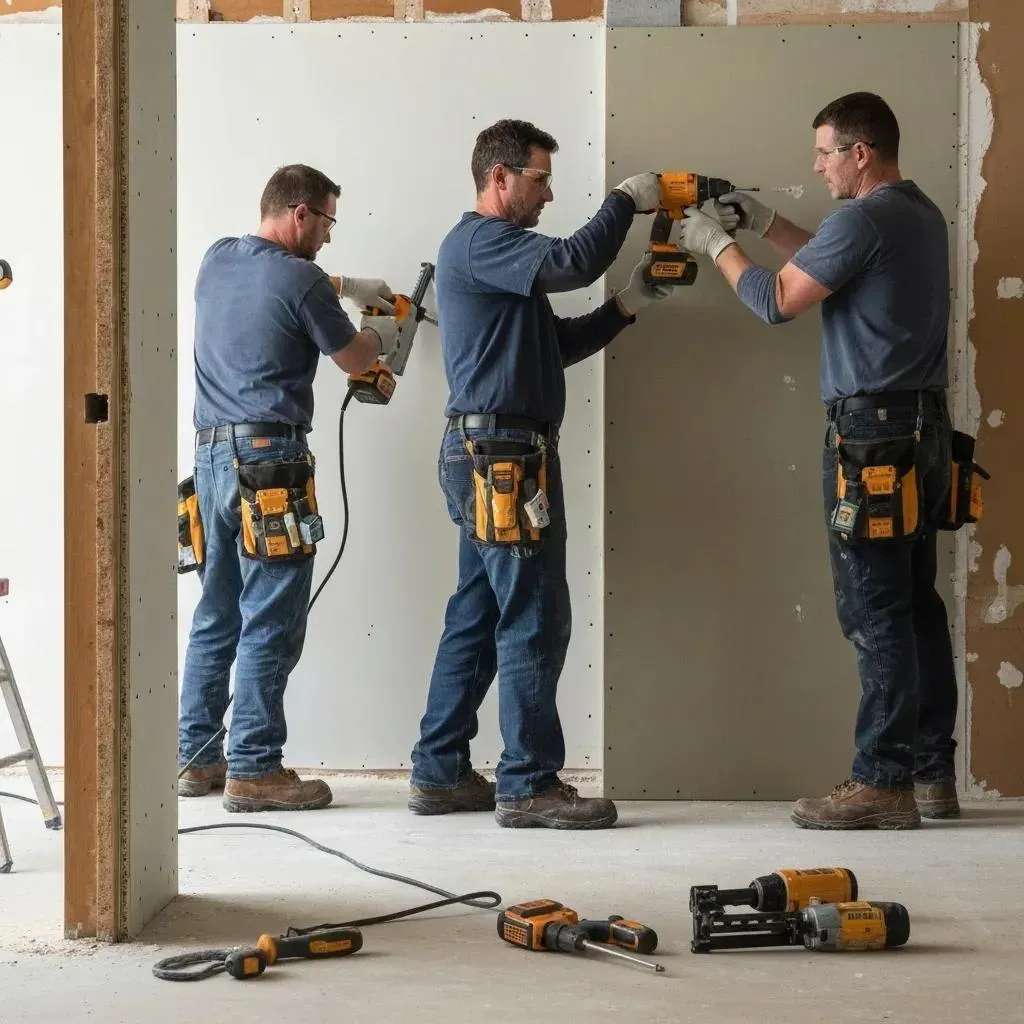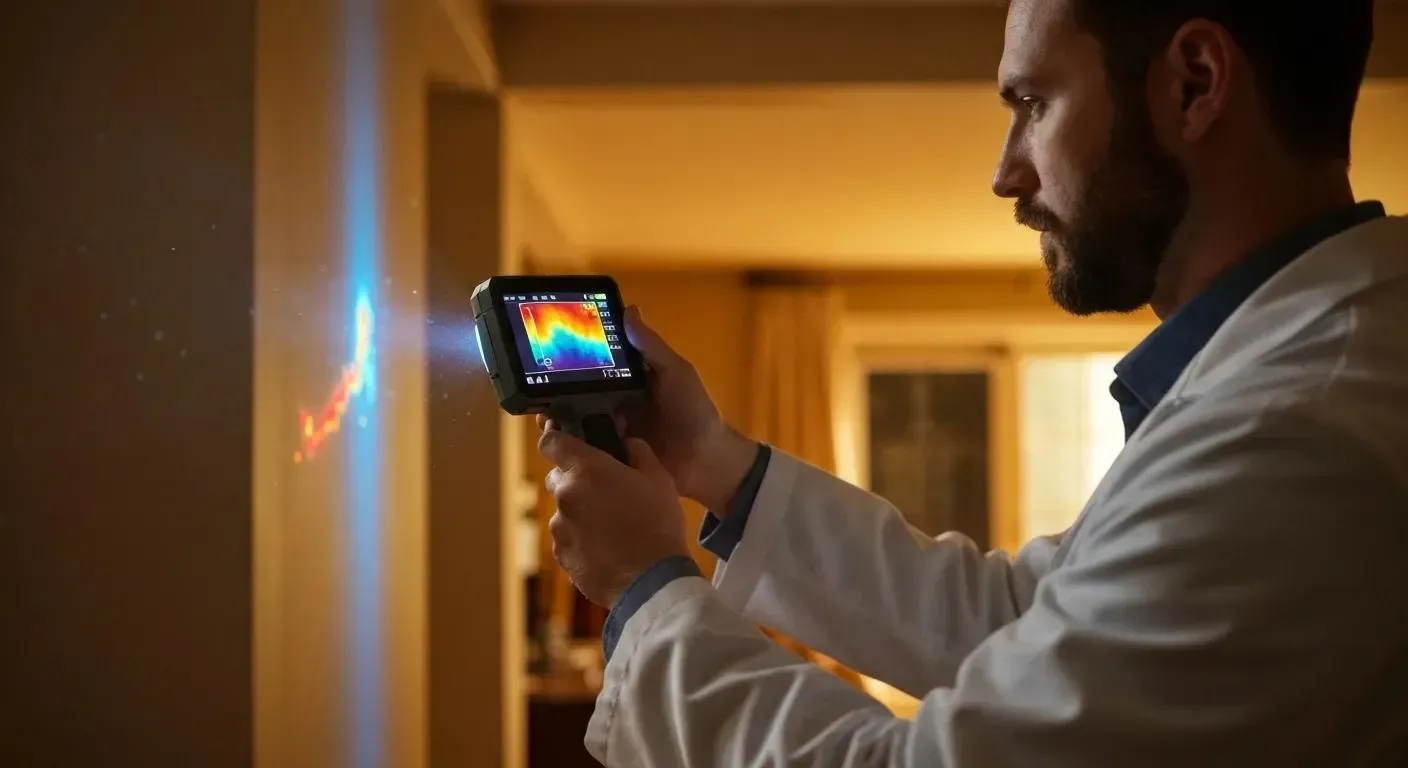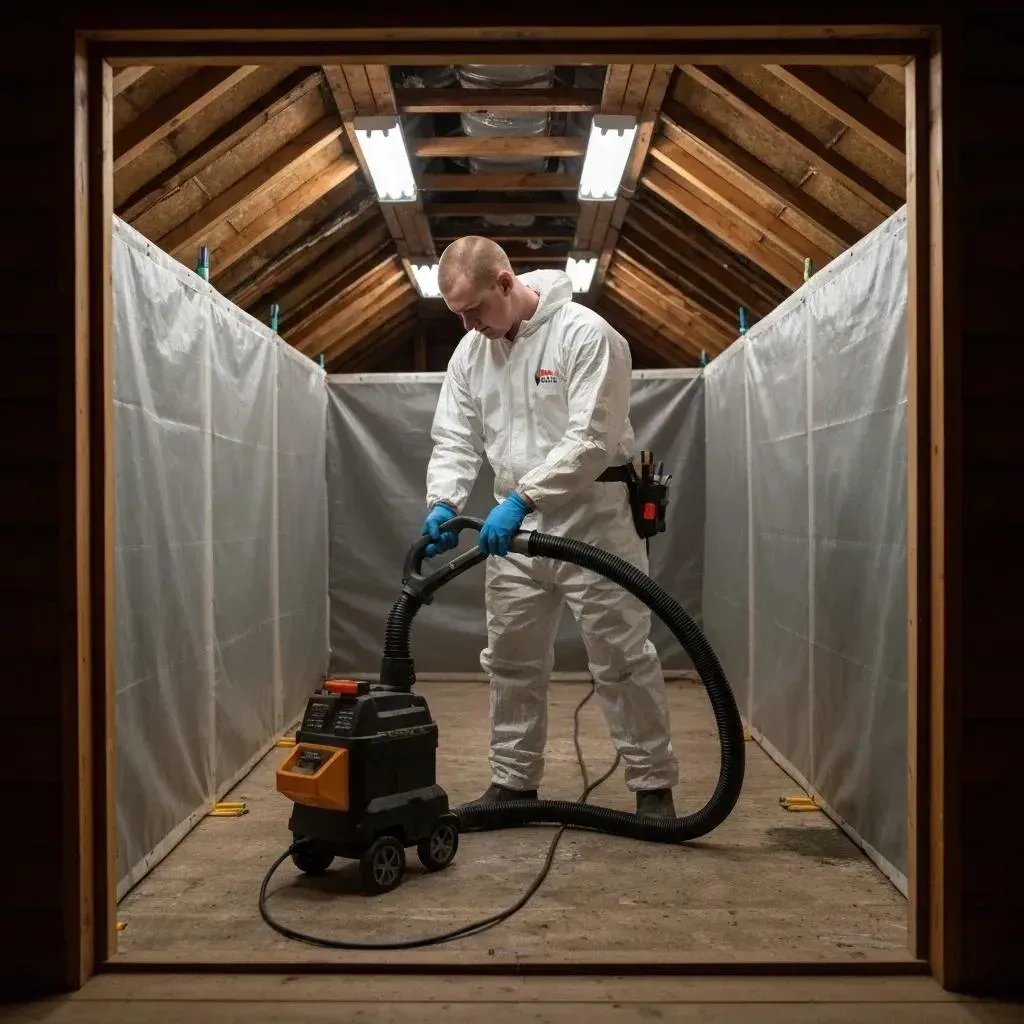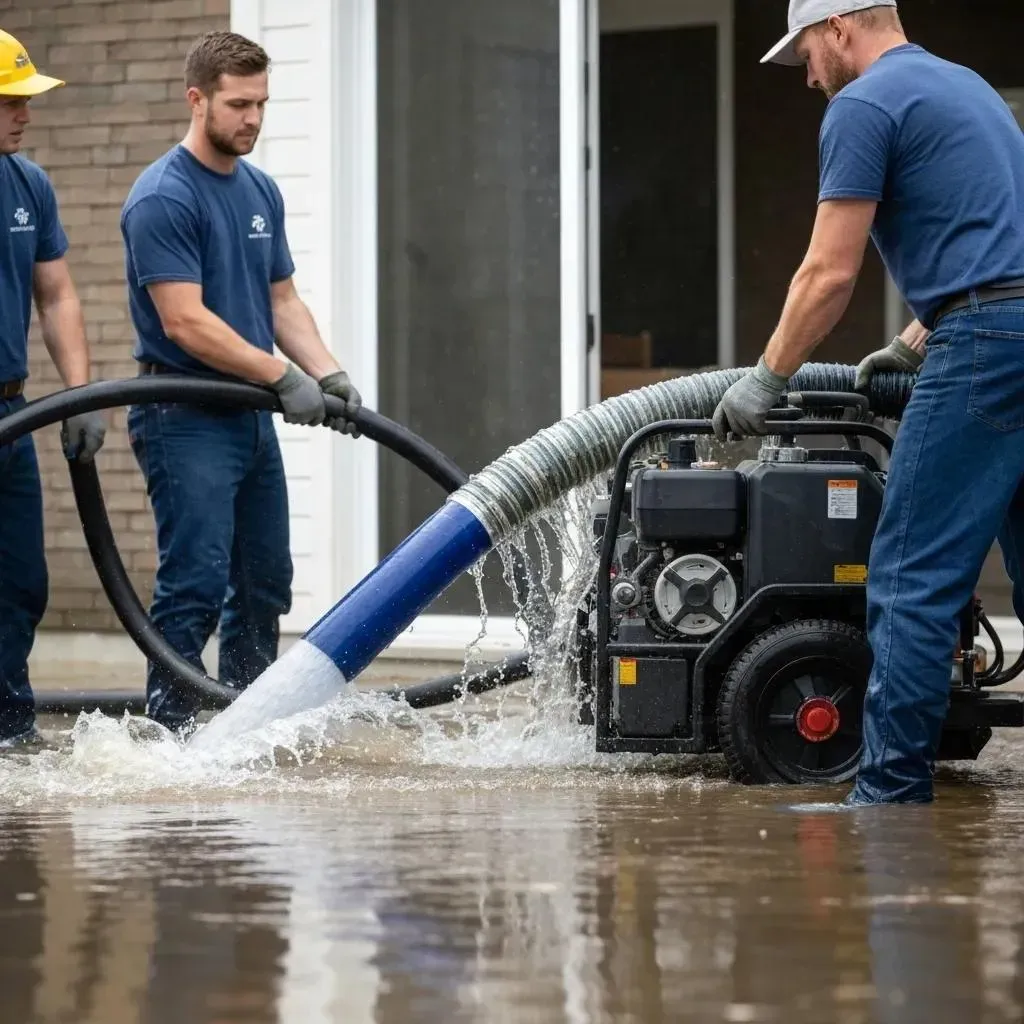Blog
When Fire Strikes: Understanding the Urgency of Fire and Smoke Cleanup
Fire and smoke cleanup is a time-sensitive process that requires immediate action to prevent permanent damage to your property. If you're facing this situation right now, here's what you need to know:
Quick Guide to Fire and Smoke Cleanup:
- Safety first- Only enter when authorities declare it safe
- Contact insurance immediately to start your claim
- Secure the property with board-up services if needed
- Document everything with photos before touching anything
- Hire certified professionals for proper assessment and cleanup
- Don't wash walls, turn on electronics, or use regular vacuums
When a fire occurs in your home, the danger doesn't end when the flames are extinguished. Soot and smoke particles continue to cause damage long after the fire is out. These acidic residues begin corroding surfaces within minutes, discoloring walls within hours, and causing permanent damage to finishes, metals, and electronics within days.
The clock starts ticking immediately:
- Within minutes: Plastics and highly porous materials begin to discolor
- Within hours: Metals tarnish, grout darkens, fiberglass yellows
- Within days: Permanent staining occurs on walls, clothing and upholstery
- Within weeks: Structural materials may require replacement rather than restoration
The longer smoke residue remains untreated, the more extensive and expensive the damage becomes. Many homeowners don't realize that smoke particles are acidic and can continue to etch surfaces and emit odors for months if not properly addressed.
I'm Mike Martinez, owner of Accountable Home Services, and I've personally overseen hundreds of fire and smoke cleanup projects throughout Denver, helping families recover their homes and businesses after devastating fire events.
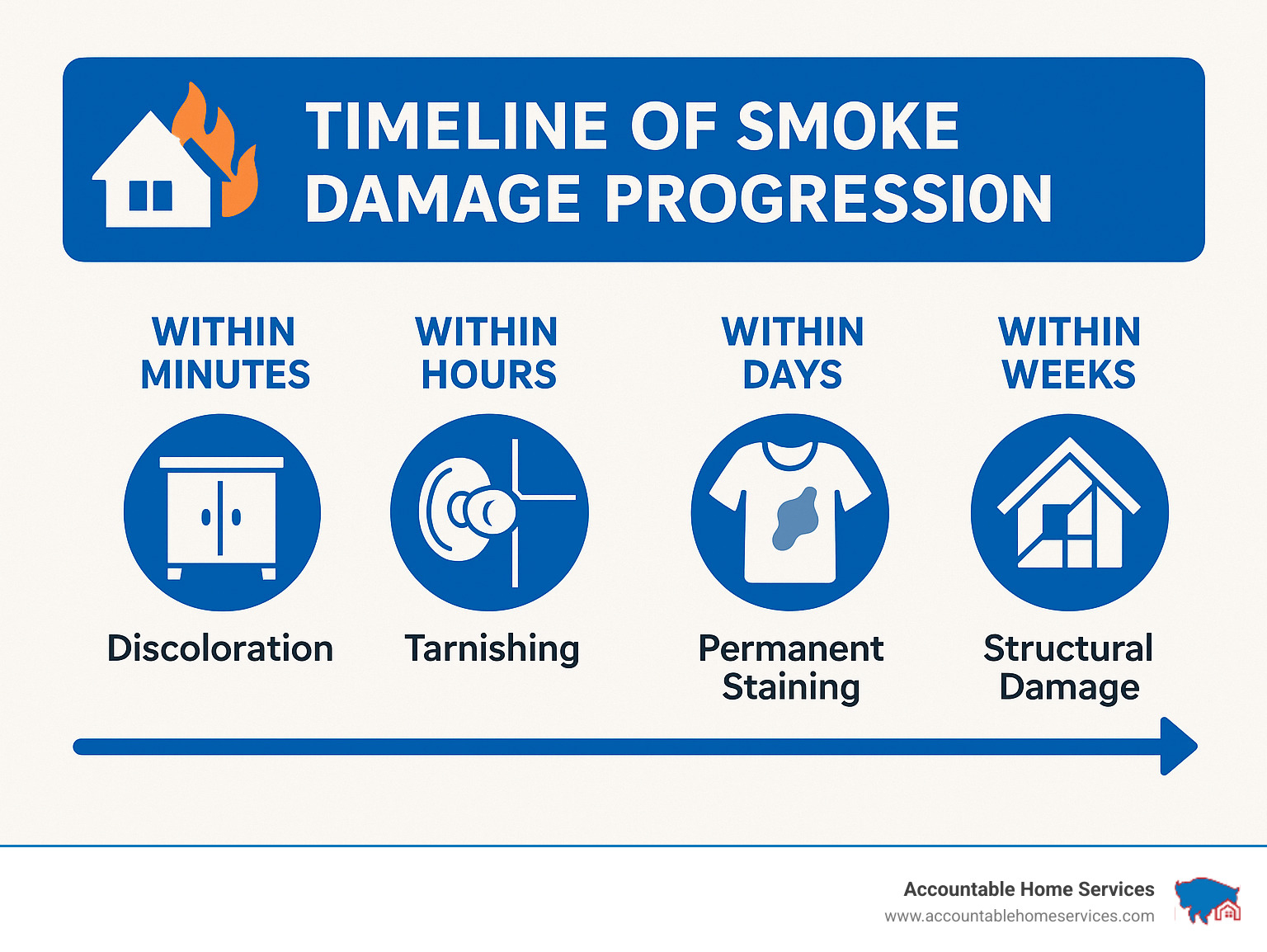
Understanding Fire & Smoke Damage
When disaster strikes your home, understanding what you're dealing with is the first step toward recovery. Fire damage isn't one-size-fits-all—it comes in several distinct classes, each requiring a specialized approach to cleanup:
Classes A through F categorize fires based on what fueled them—from ordinary materials like wood and paper (Class A), to flammable liquids (Class B), electrical equipment (Class C), combustible metals (Class D), and even cooking oils (Class F). Knowing which type affected your home helps determine the right restoration strategy.
But here's what many Denver homeowners don't realize: the visible flame damage is just the beginning. When we tackle fire and smoke cleanup, we're actually addressing two distinct types of damage:
Primary damage comes directly from the flames and heat—the charred walls, melted fixtures, and structural weakening you can easily see. But it's the secondary damage that often causes the most widespread problems—smoke, soot, and water damage from firefighting efforts can affect your entire home, even rooms the fire never touched.
Why Smoke Damage Differs From Fire Damage
"I've had clients who were shocked to find smoke residue in rooms on the opposite side of their home from where the fire occurred," shares Mike Martinez, owner of Accountable Home Services. "That's because smoke is sneaky—it doesn't play by the same rules as fire."
Smoke particles are incredibly tiny (less than 10 microns), allowing them to penetrate deeply into porous materials like drywall, upholstery, and carpeting. The heat from a fire creates pressure that actively pushes these particles into every crack, crevice, and hidden space in your home.
Smoke naturally rises, collecting on ceilings and upper walls before gradually settling downward. Meanwhile, water from firefighting efforts moves in the opposite direction, creating complex damage patterns throughout your home.
Different types of fires also produce different smoke residues:
- Wet smoke from slow-burning, low-heat fires leaves sticky, smeary residues with strong odors that are difficult to remove
- Dry smoke from fast-burning, high-heat fires creates a dry, powdery residue that's easier to clean but can settle into tiny cracks
- Protein residue from kitchen fires is virtually invisible but extremely pungent and notoriously difficult to eliminate completely

Health Risks You Can't Ignore
Beyond the damage to your property, fire-damaged homes pose serious health concerns. The National Institute for Occupational Safety and Health (NIOSH) doesn't mince words—they classify fire-damaged structures as "Immediately Dangerous to Life and Health" (IDLH) environments.
This isn't just cautious labeling. Smoke and soot contain a cocktail of harmful substances: respiratory irritants that can trigger asthma attacks and breathing difficulties; carcinogenic compounds released when synthetic materials burn; acidic particles that can damage skin and eyes; and toxic volatile organic compounds (VOCs) that cause headaches, dizziness, and nausea.
Research published in the National Institutes of Health confirms that these toxins can linger long after the fire is extinguished, posing ongoing health risks to you and your family.
This is precisely why proper personal protective equipment is non-negotiable during fire and smoke cleanup. At Accountable Home Services, our technicians always wear appropriate protection, including N-95 particulate respirators that filter airborne particles, safety goggles to protect eyes, chemical-resistant gloves, and full protective clothing.
"Your home's recovery matters, but your family's health matters more," says Martinez. "That's why we never cut corners on safety protocols during fire restoration—and why we recommend homeowners leave the cleanup to professionals whenever possible."
Understanding these complexities is why professional fire and smoke cleanup requires specialized training, equipment, and experience—especially here in Denver, where our unique climate can affect how smoke and soot interact with your home's materials.
First 24 Hours After a Fire: Essential Actions
Those first 24 hours after a fire can make all the difference between recovery and devastation. Taking swift, proper action now can save you thousands in additional damage and protect your family's health.

Safety comes first – always. Don't rush back into your home until fire officials have given you the all-clear. What looks stable might actually be compromised in ways you can't see.
Your next call should be to your insurance company. Most policies have strict timelines for reporting damage, and the sooner you start your claim, the sooner you'll receive help. Take a deep breath and make that call – they've handled situations like yours before.
Is your home now vulnerable to the elements? If you're looking at broken windows, damaged doors, or holes in the roof, you'll need emergency board-up services right away. This isn't just about keeping rain out – it prevents opportunistic theft, curious animals from entering, and stops further damage from spreading.
Before you touch a single item, grab your phone and document everything. Walk through (safely) and take detailed photos and videos of all damaged areas. I've seen too many homeowners regret not having enough evidence for their insurance claims – don't be one of them.
Be mindful of where you step. Every footprint can push soot deeper into your carpets and upholstery. If you absolutely must move through damaged areas, lay down clean towels or sheets as pathways.
If your HVAC system was running during the fire, those filters need immediate changing. Otherwise, you're just recirculating smoke particles throughout your home, spreading the damage to previously unaffected areas.
In rooms with minimal damage, covering furniture with clean sheets can prevent soot from settling on these surfaces during the fire and smoke cleanup process.

What NOT to Do (and Why)
Even with the best intentions, some actions can turn a bad situation worse. That urge to start cleaning? Hold off for a moment.
Don't wash walls or painted surfaces yet. I've seen homeowners grab a sponge and some water, thinking they're helping, only to create a permanent soot paste that stains their walls. As our lead technician often says, "One of the most common mistakes we see is homeowners trying to clean walls with water right away. This actually creates a paste with the soot that can permanently stain surfaces."
Don't power up fire-affected appliances – not even to "check if they still work." Fire can damage internal wiring, creating shock or fire hazards. Let a professional inspect them first.
Don't turn on ceiling fans, as tempting as it might be to "clear the air." This just sends soot particles swirling throughout the room, spreading contamination to surfaces that might have escaped damage.
Don't eat or drink anything that was exposed to the fire, even if it looks untouched. Smoke particles are microscopic and can penetrate packaging, contaminating food with toxic residues.
Don't use your regular vacuum on soot. Standard vacuums lack the filtration needed and will simply blow fine particles back into the air. Only HEPA-filtered equipment should be used for fire and smoke cleanup.
Don't send smoke-damaged clothing to your regular dry cleaner. They likely don't have the specialized equipment and solutions needed to properly remove smoke odors and residues.
Water, Mold & Cross-Contamination Threats
Many homeowners don't realize that firefighting efforts create a second disaster – water damage. Those hoses pump hundreds to thousands of gallons of water into your home, creating new problems to address.
Water can quickly saturate drywall, insulation, and wooden structures, weakening your home's integrity. But the bigger threat is often invisible – mold can begin growing within just 24-48 hours in these damp environments.
Cross-contamination is another silent danger. Moving between affected and unaffected areas without proper precautions can spread soot and smoke residue, extending damage to previously clean spaces.
At Accountable Home Services, we tackle these secondary threats head-on. We use professional-grade moisture meters to find hidden water pockets that the naked eye would miss. Our industrial dehumidifiers start working immediately to prevent mold from taking hold. And we carefully establish containment barriers to prevent cross-contamination during the fire and smoke cleanup process.
The first day after a fire feels overwhelming, but you don't have to face it alone. With the right immediate actions and professional support, recovery is possible – and it starts right now.
The Professional Fire and Smoke Cleanup Process
When disaster strikes your home, you need more than just cleaning—you need a methodical approach that addresses every aspect of fire and smoke damage. At Accountable Home Services, we follow the industry gold standard: the IICRC S700 Standard for Professional Fire and Smoke Damage Restoration. Let me walk you through what happens when our team arrives at your door.
Step 1: Inspection & Damage Assessment
Every successful restoration begins with a thorough assessment. Our technicians arrive with specialized equipment to evaluate not just what you can see, but what's hidden beneath the surface.
"A proper assessment is crucial," explains our operations manager. "It helps us create a custom restoration plan that addresses your specific situation rather than applying a one-size-fits-all approach."
We carefully examine your home using moisture meters, thermal imaging cameras, and air quality monitors to detect damage invisible to the naked eye. This detailed inspection helps us determine:
- Which cherished items can be saved versus what must be replaced
- Any lurking safety hazards, from weakened floor joists to compromised electrical systems
- The most effective cleaning approach based on your specific type of fire
This comprehensive assessment becomes the foundation for your itemized estimate—a clear roadmap showing exactly what work needs to be done and how long the recovery will take. No surprises, just clarity during a chaotic time.
Step 2: Soot & Surface Cleaning – "Dry First, Then Wet"
When it comes to fire and smoke cleanup, one rule stands above all others: always start dry. This isn't just a preference—it's essential for preventing permanent damage.
Think of soot as an oily, stubborn residue that smears when wet. Adding water too soon can drive these stains deeper into your walls, furnishings, and keepsakes. Our technicians follow a proven sequence:
First, we carefully HEPA vacuum all surfaces, using specialized equipment that captures even microscopic particles without recycling them back into your air. Next comes the magic of chemical sponges (sometimes called soot sponges), which lift away residue through gentle wiping motions.
For stubborn areas, we apply professional-grade degreasers that break down the oily components of soot, followed by pH-neutral rinses that protect sensitive surfaces from further damage.
When cleaning walls, we work from bottom to top—which might seem counterintuitive. This prevents dirty cleaning solution from running down freshly cleaned areas and creating streaks that are nearly impossible to remove.
Step 3: Water Extraction & Structural Drying
"Water damage after a fire is often overlooked," notes our water restoration specialist. "But it can actually cause more long-term problems than the fire itself if not properly addressed."
Firefighting efforts typically leave behind hundreds of gallons of water that need immediate attention. Our water removal process includes:
We begin with powerful extraction equipment to remove standing water from your home. Next, we strategically position commercial-grade air movers to accelerate evaporation from surfaces and materials. Industrial dehumidifiers work alongside these air movers, pulling moisture from both the air and building materials.
Throughout this process, we maintain optimal temperature control to speed drying while preventing mold growth. Our technicians monitor moisture levels daily, taking readings that ensure every affected material reaches its proper dry standard—typically matching what it would contain under normal conditions.
Step 4: Odor Neutralization & Air Quality
The smell of smoke can linger long after visible damage is repaired. That's because smoke particles embed themselves deeply into porous materials throughout your home. Eliminating these odors requires a multi-faceted approach.
Our arsenal includes hydroxyl generators that use UV light to create odor-neutralizing radicals without harmful residues. For deeper penetration, we employ thermal fogging—a technique that distributes heated deodorizers that reach into materials the same way smoke did during the fire.
We also use specialized odor-absorbing SOS membranes in affected areas, HEPA air scrubbers that filter particles as small as 0.3 microns, and when necessary, encapsulating sealers that lock in any remaining odors in surfaces that can't be fully deodorized.
The right combination of these methods depends on your specific situation—the type of fire, affected materials, and the layout of your home all influence our approach to fire and smoke cleanup.
Step 5: Restoration, Remediation, Reconstruction
The final phase brings your home back to life. This is where you begin to see the light at the end of the tunnel as we transform your damaged property back into the home you love.
Our comprehensive reconstruction services include rebuilding damaged structural elements, installing new flooring and drywall, applying fresh paint, and replacing damaged trim. We also repair or replace affected systems—electrical, plumbing, and HVAC components that may have been compromised.
The finishing touch is returning your cleaned and restored belongings to their proper places, helping you truly feel at home again.
What sets Accountable Home Services apart is our ability to handle every aspect of this process in-house. You won't need to coordinate multiple contractors or juggle different timelines. We also offer direct insurance billing to simplify the claims process, removing one more burden from your shoulders during this challenging time.
From the first inspection to the final touch-up, our goal is to deliver a restoration that makes your home feel not just repaired, but renewed—often better than it was before the fire occurred.
DIY vs. Pro: Smart Choices for Safe Results

When you're facing the aftermath of a fire, you might wonder if you can handle the cleanup yourself or if you need to call in the experts. It's a valid question – especially when you're already dealing with the stress and financial impact of a fire.
The truth is, while professional restoration is typically the safest route, there are certain limited situations where you might be able to tackle minor fire and smoke cleanup yourself. Let's break down how to make this important decision.
Professional restoration companies like ours bring specialized equipment, training, and experience to the table. We're equipped to handle everything from small kitchen fires to major structural damage. But for very minor incidents, a careful DIY approach might be appropriate.
Here's a helpful comparison to guide your decision:
| Aspect | DIY Approach | Professional Approach |
|---|---|---|
| Scope | Small, contained fires (single item) | Multiple rooms or structural damage |
| Safety | Requires proper PPE, limited exposure | Comprehensive safety protocols and equipment |
| Cost | Lower immediate out-of-pocket expense | Higher cost but often covered by insurance |
| Timeline | Extended time for inexperienced workers | Faster completion with trained teams |
| Results | May miss hidden damage | Thorough remediation of all affected areas |
When Homeowners Can Tackle Small Fire and Smoke Cleanup Tasks
If you've experienced something minor – like a small contained kitchen fire with minimal smoke spread – you might be able to handle the initial cleanup. But safety comes first, always.
"I always tell homeowners to be honest with themselves about the scope of the damage," says Mike Martinez, owner of Accountable Home Services. "If you're uncertain at all, it's better to get a professional assessment than risk your health or miss hidden damage."
If you do decide to tackle a small cleanup job yourself, follow these essential steps:
First, protect yourself properly. That means wearing an N-95 respirator (not just a dust mask), chemical-resistant gloves, safety goggles, and clothing that covers your arms and legs. Smoke particles contain harmful chemicals you don't want on your skin or in your lungs.
Next, ventilate thoroughly by opening all windows and doors. Use fans to create cross-ventilation that pushes contaminated air outside.
When beginning the actual cleaning, remember the golden rule of fire and smoke cleanup: dry methods first, then wet. Start by using a HEPA vacuum (never your regular household vacuum) to gently remove loose soot without touching the surfaces. This prevents smearing the oily residue deeper into materials.
For walls and ceilings, use chemical dry sponges (also called soot sponges) with light, overlapping strokes. These special sponges lift away soot without spreading it. Never wet the sponge or scrub vigorously – you'll just drive the soot deeper.
For hard, non-porous surfaces that need deeper cleaning, mix a solution of 4-6 tablespoons of trisodium phosphate (TSP) with 1 cup of household cleaner or bleach to 1 gallon of warm water. Always wear rubber gloves when working with these cleaning solutions.
For washable fabrics affected by smoke, add a tablespoon of pure vanilla extract to your regular detergent. This simple trick helps neutralize smoke odors during washing.
Red Flags that Demand Professional Help
While minor situations might be DIY-appropriate, certain scenarios absolutely require professional fire and smoke cleanup:
Protein fires from cooking are particularly tricky. These kitchen fires might not look bad at first glance because they leave nearly invisible residue, but that residue is extremely pungent and notoriously difficult to remove without specialized cleaning agents.
Electrical fires often produce particularly toxic residues that require specialized cleaning approaches and safety precautions. The same goes for fires involving synthetic materials, which can release harmful chemicals when burned.
When water damage accompanies fire damage – which is common after firefighting efforts – you're dealing with a complex situation. Water-saturated structures need professional drying to prevent mold growth, which can begin in as little as 24-48 hours.
If smoke has entered your HVAC system, professional help is non-negotiable. Contaminated ductwork can continuously redistribute smoke particles throughout your home, essentially re-contaminating areas you've already cleaned.
Lingering odors after your cleanup attempts are a clear sign you need professional assistance. Smoke odor is particularly persistent because particles embed deeply in porous materials. Professionals have specialized equipment like hydroxyl generators and thermal foggers that can neutralize these odors at their source.
Finally, insurance requirements often stipulate professional restoration. Many policies require professional documentation and cleanup to maintain coverage. Attempting DIY cleanup might actually jeopardize your claim.
"We've helped many homeowners who initially tried to handle cleanup themselves," shares our claims specialist. "Unfortunately, by the time they called us, they were facing additional challenges – insurance complications, persistent odors, or finding hidden damage months later. Early professional intervention almost always leads to better outcomes."
At Accountable Home Services, we understand the stress and uncertainty that follows a fire. Whether you need full-scale restoration or just expert advice on a minor situation, we're here to help Denver homeowners steer the recovery process with clarity and confidence.
Costs, Insurance & Long-Term Prevention
When it comes to fire and smoke cleanup, one of the first questions homeowners ask is, "How much will this cost?" The truth is, restoration costs vary widely based on several factors. The extent of damage, size of your home, types of materials affected, and the specific services needed all play important roles in determining the final price tag.
Most homeowners are relieved to learn that their insurance typically covers fire damage restoration. This includes everything from the initial emergency board-up and tarping to protect your home, through water extraction, soot removal, odor elimination, and ultimately the reconstruction of damaged areas. Even content cleaning and restoration—getting your personal belongings back to pre-fire condition—is usually covered.
Here at Accountable Home Services, we understand that navigating insurance claims during such a stressful time can feel overwhelming. That's why we work directly with all major insurance companies and use industry-standard Xactimate software for our estimates. This transparency ensures the pricing is fair and readily accepted by your insurance provider.
"Most homeowners don't realize we can bill their insurance directly," explains our claims specialist. "It's one less thing to worry about during an already difficult time."
The timeline for complete restoration varies significantly—smaller, contained incidents might be resolved in a few weeks, while extensive damage requiring major reconstruction could take several months. We'll always provide realistic timeframes so you can plan accordingly.
Working With Your Adjuster
Your relationship with your insurance adjuster can make or break the claims process. Here's how to ensure things go smoothly:
Document everything thoroughly. Before cleanup begins, capture detailed photos and videos of all damaged areas and items. This visual evidence is invaluable for your claim.
Create a comprehensive loss inventory. List all damaged items, including approximate values and purchase dates. This helps ensure you're properly compensated for your belongings.
Keep every receipt. From temporary housing to replacement necessities, save documentation for any expenses related to your displacement. Many policies cover these costs.
Stay in regular contact with your adjuster. Regular updates keep your claim moving forward and help address any questions or concerns promptly.
Know your policy inside and out. Understanding your coverage limits, deductibles, and any exclusions helps prevent surprises during the claims process.
Our team at Accountable Home Services has built strong relationships with major insurance companies throughout the Denver Metro Area. We often help expedite claims processing, getting you back home faster.
Future-Proofing Your Property
After experiencing a fire, many homeowners want to take proactive steps to prevent future incidents. The reconstruction phase after fire and smoke cleanup presents the perfect opportunity to incorporate safety upgrades.
Hard-wired smoke alarms with battery backup provide superior protection compared to battery-only models. Consider interconnected systems that ensure when one alarm detects smoke, all alarms sound throughout your home.
Fire-resistant building materials can significantly improve your home's resilience. During reconstruction, ask about upgrading to fire-resistant drywall, insulation, and roofing materials that provide added protection.
Electrical system upgrades address one of the most common fire causes. Outdated wiring often contributes to house fires, so modernizing during reconstruction makes perfect sense.
Regular HVAC system maintenance prevents dust buildup that can fuel fires. Schedule professional cleanings at least annually, especially after a fire and smoke cleanup project.
Creating a home fire safety plan with your family ensures everyone knows exactly what to do in an emergency. Establish clear escape routes, meeting points, and practice your plan regularly.
Consider developing a pre-loss inventory documenting your home's contents and structure. This detailed record proves invaluable should you ever face another disaster, making the claims process much smoother.
"The silver lining after a fire is the opportunity to rebuild stronger and safer," our project manager often tells clients. "We can incorporate numerous safety improvements during reconstruction that will protect your family for years to come."
For more comprehensive information about our approach to restoring homes after fire damage, visit our Fire and Water Damage Repair page.
Frequently Asked Questions about Fire and Smoke Cleanup
How quickly must cleanup begin to prevent permanent damage?
The clock starts ticking the moment flames are extinguished. Fire and smoke cleanup should ideally begin within 24-48 hours after your property is declared safe to enter. This isn't just about convenience—it's about preventing permanent damage that worsens with each passing hour.
Think of soot as a silent destroyer. These acidic particles immediately begin attacking your home's surfaces:
Within minutes, plastics and highly porous materials begin showing discoloration. By the time a few hours have passed, metal fixtures start to tarnish, your grout darkens noticeably, and fiberglass surfaces take on a yellowish hue. Give it a few days, and you're looking at permanent staining on your walls, upholstery, and clothing.
"The damage timeline is something many homeowners don't fully appreciate until they see it firsthand," says Mike Martinez, our restoration manager. "When we arrive at homes where cleanup was delayed for a week or more, we often have to explain that certain items simply can't be restored anymore."
Perhaps most concerning is the water used to extinguish the fire. This creates the perfect breeding ground for mold, which can establish colonies in just 24-48 hours. This adds another layer of remediation to your fire and smoke cleanup needs.
Can I stay in my house during fire and smoke cleanup?
In most cases, you'll need temporary housing during the cleanup process. I know it's tempting to stay in your own home, especially during such a stressful time, but there are several compelling reasons why this isn't a good idea:
First and foremost is your health. Smoke particles aren't just unpleasant—they contain toxic compounds that can cause respiratory issues, eye irritation, and other health problems, especially for children, elderly family members, or those with existing conditions.
The restoration process itself makes normal living nearly impossible. Industrial-grade dehumidifiers, air scrubbers, and other equipment run constantly, creating noise levels that make sleeping difficult. Plus, the professional cleaning agents used, while effective, often have strong odors.
There's also the risk of cross-contamination. Moving between cleaned and uncleaned areas can reintroduce contaminants, essentially undoing the work being done.
The good news? Most insurance policies include coverage for Alternative Living Expenses (ALE) specifically for situations like this. At Accountable Home Services, we've built relationships with local hotels and rental agencies throughout Denver, and we can help coordinate comfortable temporary housing while we restore your home.
What certifications should a restoration company hold?
Choosing the right company for fire and smoke cleanup is crucial, and certifications are your best indicator of professionalism and expertise. Here's what to look for:
IICRC certification(Institute of Inspection Cleaning and Restoration Certification) is the gold standard in our industry. Pay special attention to companies whose technicians hold the Fire and Smoke Restoration Technician (FSRT) certification. This means they've been formally trained in the latest techniques and safety protocols.
The Restoration Industry Association (RIA) membership indicates a company's commitment to industry best practices and ongoing education.
Don't overlook the basics: proper state and municipal licenses for both restoration and construction work. This is particularly important for the reconstruction phase of your restoration.
For homes built before 1978, EPA Lead-Safe Certification is essential, as fire damage can disturb lead paint and create additional hazards.
At Accountable Home Services, we take certification seriously. Every one of our technicians holds IICRC certifications specific to their area of expertise, and we maintain all required licensing for work throughout the Denver Metro Area. We believe this commitment to professional standards is part of being truly accountable to our clients during their most vulnerable moments.
Conclusion & Next Steps
When fire strikes your home, the path forward may seem overwhelming. But with prompt fire and smoke cleanup, your property can be restored to its pre-loss condition—sometimes even better than before. Throughout this guide, we've covered the essential information you need to steer this challenging time.
Remember these crucial takeaways:
Time is your enemy after a fire. Each passing hour allows acidic soot to cause more permanent damage to your home and belongings. Quick action is your best defense.
Safety must come first. Never enter your property until authorities have declared it safe, and always use appropriate protective equipment if you must be inside before professional cleanup begins.
Document everything carefully. Your smartphone camera is a powerful tool for capturing damage for insurance purposes—use it extensively before anything is moved or cleaned.
Professional expertise makes all the difference. While minor situations might be manageable on your own, certified restoration technicians have the training, equipment, and experience to address hidden damage you might miss.
This is an opportunity to improve. During reconstruction, consider upgrading to fire-resistant materials and better safety systems to protect your home from future incidents.
As a locally-owned company deeply rooted in the Denver community, Accountable Home Services understands the unique challenges Colorado homeowners face after a fire. Our mountain climate, building materials, and even altitude create specific restoration needs that our experienced team is specially trained to address.
We're proud to offer comprehensive fire and smoke cleanup services throughout the Denver Metro Area, including Broomfield, Westminster, Thornton, Northglenn, Arvada, Boulder, Denver, Longmont, Erie, and surrounding communities. Our IICRC-certified technicians are available 24/7 for emergency response, and we work directly with all major insurance companies to minimize your stress during recovery.
From your first call through the final walk-through of your restored home, our commitment is to provide clear communication, exceptional craftsmanship, and compassionate service. We're not just restoring properties—we're helping rebuild lives and creating safer homes for our neighbors.
If you're facing fire or smoke damage right now, don't wait another minute. Contact Accountable Home Services for a free consultation and let our family-owned business help your family begin the journey to recovery. Your home deserves nothing less than accountable, professional care during this critical time.

